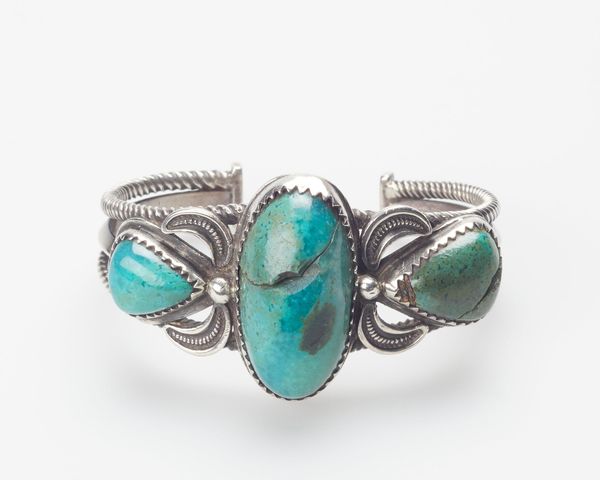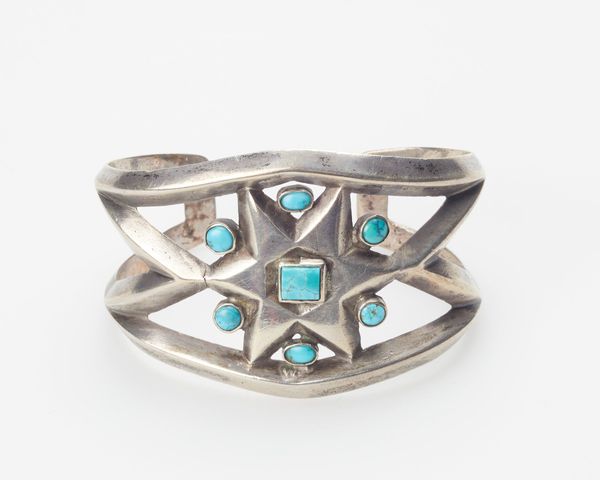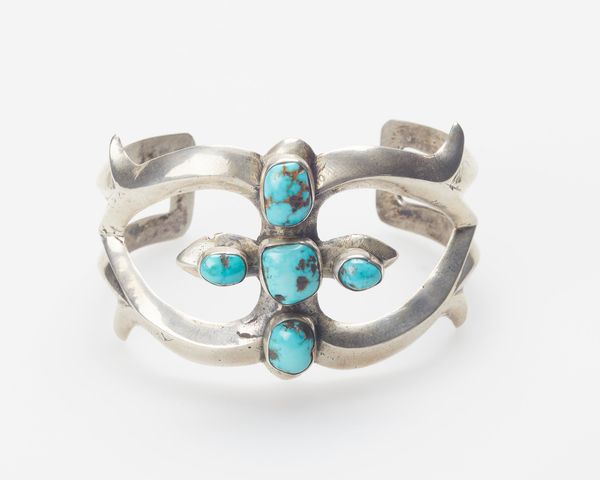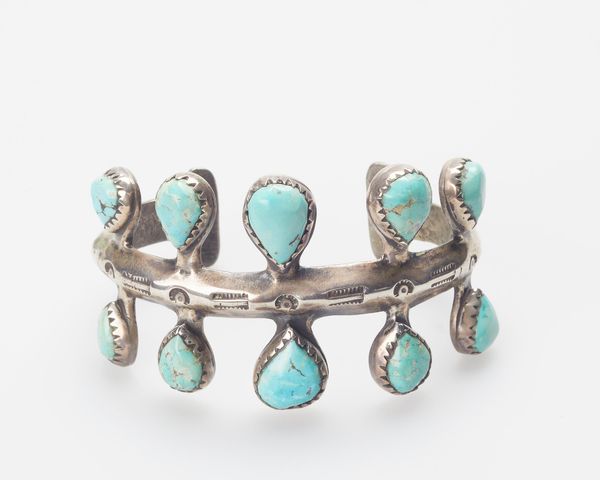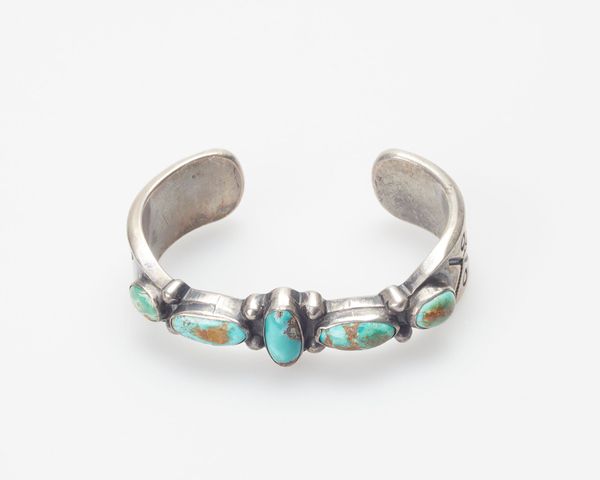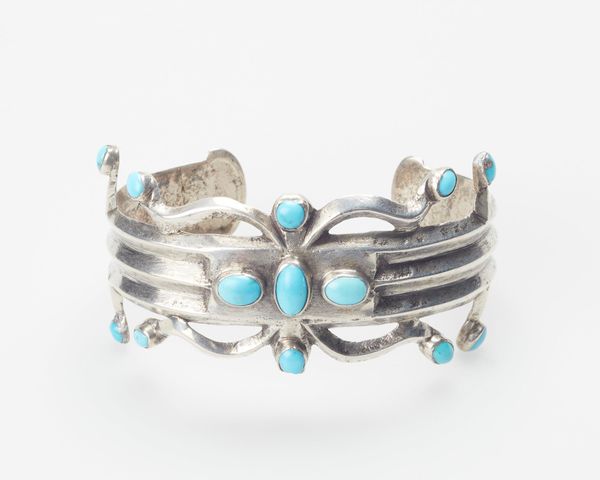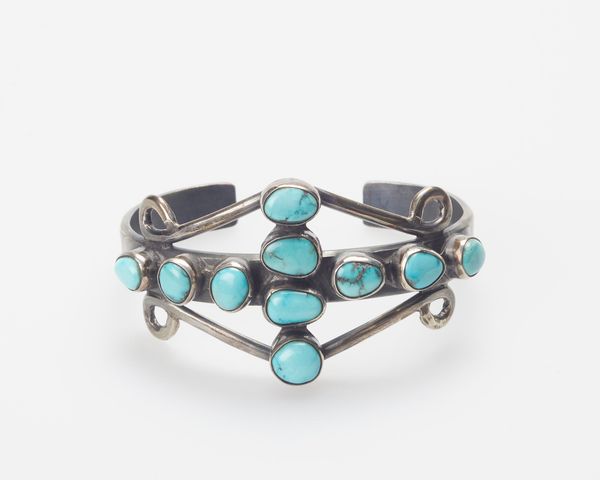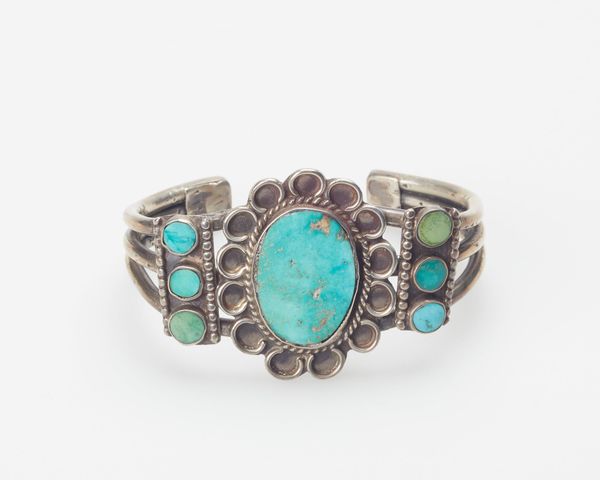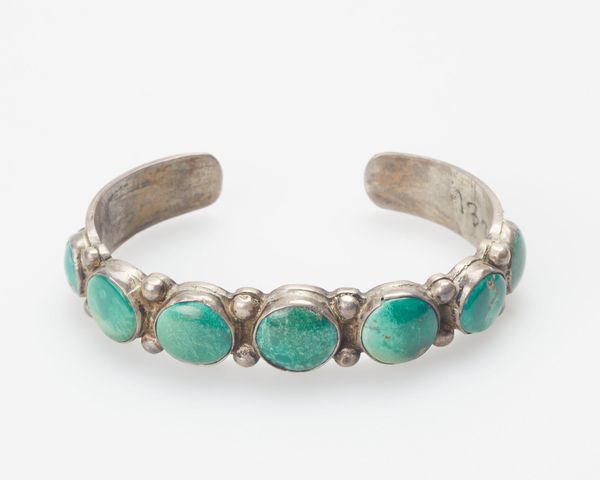
silver, metal, sculpture
#
silver
#
metal
#
sculpture
#
indigenous-americas
Dimensions: 2 7/8 x 2 1/16 in. (7.3 x 5.2 cm)
Copyright: Public Domain
Editor: This bracelet, made between 1910 and 1920 by Navajo artists, uses silver and metal. It looks quite modern with its geometric forms. How do you see this piece? Curator: Initially, I’m struck by its construction. Observe the geometric framework; it is seemingly built around a series of angular repetitions that creates a larger form. How does the artist utilize negative space? Editor: I notice that the negative spaces inside the silver frame have the same angular form as the solid frame itself. Curator: Precisely. Consider also the placement of the turquoise. The colour and form, punctuating the composition rhythmically, adds visual interest to this object. What is your interpretation? Editor: It looks balanced. Each stone seems intentionally placed. I am curious whether there’s a story behind those specific placements and why that turquoise? Curator: Aesthetically, turquoise contrasts beautifully against the silver. Beyond that, one could analyse Navajo symbology, but here it is best to appreciate how materials come together to generate new formal qualities in art and design. Can we know definitively why a specific turquoise was chosen, or why a craftsman selected a certain proportion for each repetition? Editor: That's true, we cannot definitively know the meaning of a specific detail in that era. I appreciate seeing the composition as its own kind of language. Curator: And remember, that language relies not just on the what, but the how— the precise geometry and the contrasting materials work together. Editor: Thanks! Looking at its pure structure has really enhanced my view. Curator: Indeed, attention to material properties and forms allows for more insightful experience.
Comments
No comments
Be the first to comment and join the conversation on the ultimate creative platform.
